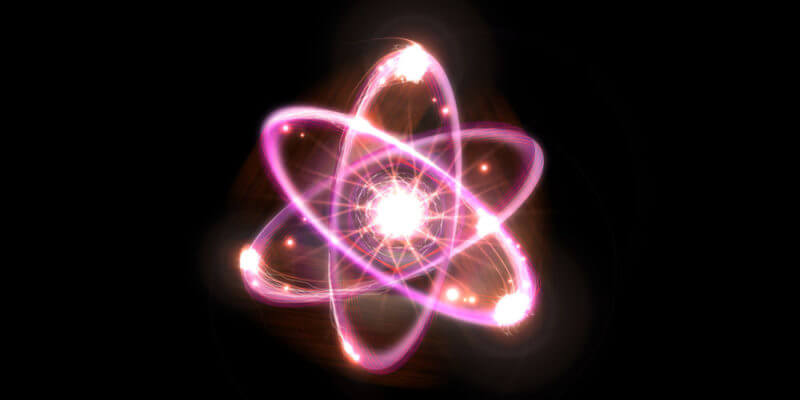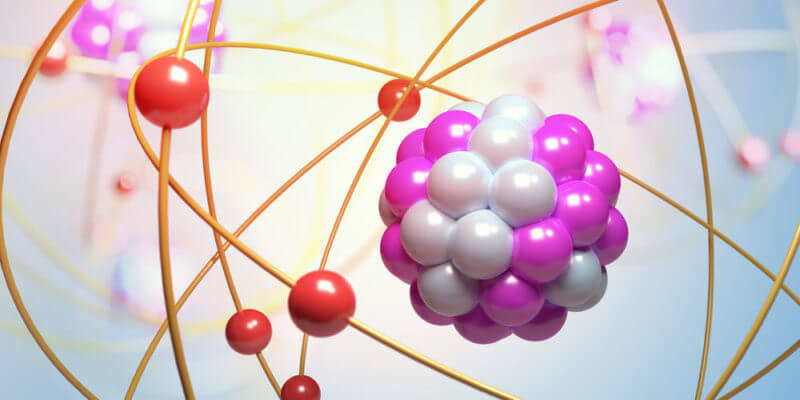Discover the essential features of atoms, including their subatomic particles, indivisibility, fixed proton quantity, electron configuration, and adherence to the octet rule. Gain insights into the fundamental nature of atoms in this comprehensive overview.

What is the atom?
An atom is the basic building block of matter. It is the smallest unit of an element that retains the chemical properties of that element. Atoms are composed of subatomic particles, including protons, neutrons, and electrons.
The nucleus, located at the center of the atom, contains protons, which carry a positive electrical charge, and neutrons, which have no electrical charge. The number of protons in an atom determines its atomic number and defines the element. For example, an atom with one proton is hydrogen, while an atom with six protons is carbon.
Electrons, which are negatively charged, orbit the nucleus in regions called electron shells or energy levels. The electrons are distributed in these shells based on their energy. The innermost shell can hold up to two electrons, while the subsequent shells can hold more. The outermost shell, known as the valence shell, determines the atom’s chemical behavior and its ability to form chemical bonds with other atoms.
Atoms are electrically neutral overall because the number of protons, which carry a positive charge, is balanced by the number of electrons, which carry a negative charge. However, atoms can gain or lose electrons, resulting in the formation of ions with a net positive or negative charge.
Different combinations of atoms form molecules or compounds, which are the building blocks of substances. The study of atoms and their interactions is a central part of chemistry and physics.

Atom characteristics:
Indivisible Particle
The idea that atoms are indivisible particles was proposed by the ancient Greek philosopher Democritus around 400 BCE. He suggested that matter is made up of tiny, indivisible particles called “atomos,” meaning “uncuttable” or “indivisible” in Greek. This concept of the atom as an indivisible particle remained influential for many centuries.
However, with the advancement of scientific knowledge, it was discovered that atoms are not actually indivisible. In the early 20th century, experiments such as J.J. Thomson’s discovery of the electron and Ernest Rutherford’s gold foil experiment provided evidence that atoms are composed of even smaller subatomic particles.
The modern understanding of atoms incorporates the subatomic particles known as protons, neutrons, and electrons. Protons and neutrons are located in the nucleus at the center of the atom, while electrons orbit the nucleus in energy levels or electron shells. These subatomic particles have mass and charge, and they interact with each other through fundamental forces such as electromagnetic forces and nuclear forces.
While atoms are not indivisible in the strict sense, the term “atom” is still used to describe the fundamental unit of an element and its characteristic properties. The word “atom” has evolved to represent the smallest unit of an element that retains the chemical properties of that element, as I mentioned earlier. The concept of atoms being indivisible particles was an important step in the development of our understanding of matter, but our current knowledge shows that atoms are indeed composed of subatomic particles.
Structure
The atom is made up of a central nucleus and a shell. The nucleus contains positively charged particles called protons and also uncharged particles known as neutrons. The crust is made up of a cloud of electrons, negatively charged, organized as orbitals.

Infinitely light particle
The approximate mass of protons and neutrons is 1.675 x 10^-24; that of electrons is even smaller: 9.1 x 10^-28. This makes the atoms extremely light.
Forms molecules
Atoms group together to form molecules. Each type of molecule is the combination of a certain number of atoms linked together in a specific way, and a molecule can contain atoms of different elements or the same.
Intalterable
Each atom retains its structural characteristics, beyond being part of different molecules, because during chemical reactions atoms are neither created nor destroyed, but are organized differently, creating bonds between one atom and another.
Fixed proton quantity
The concept of a fixed quantity of protons in an atom is a fundamental characteristic of atoms. Each atom of a particular element has a specific number of protons in its nucleus, known as the atomic number. This number determines the identity of the element and remains constant for all atoms of that element.
For example, hydrogen atoms always have one proton in their nucleus, carbon atoms have six protons, and oxygen atoms have eight protons. This fixed proton quantity is what distinguishes one element from another.
The atomic number also determines the overall charge of the atom when it is electrically neutral. Since protons carry a positive charge, the number of protons is balanced by an equal number of negatively charged electrons orbiting the nucleus. So, in an electrically neutral atom, the number of protons equals the number of electrons.
While the number of protons remains fixed for a given element, atoms can gain or lose electrons, resulting in the formation of ions with a net positive or negative charge. However, the number of protons in the nucleus remains constant, defining the element itself.
It’s worth noting that in certain scientific contexts, such as nuclear reactions or particle accelerators, protons can be added to or removed from an atomic nucleus, resulting in the creation of different isotopes or even different elements. However, such processes involve altering the nucleus itself rather than changing the number of protons within an individual atom.
Atom mass
The mass of an atom is given by the sum of the protons and the neutrons of its nucleus (since that of the electrons is infinitely small and therefore negligible). This parameter is called the mass number, and is represented by the letter A.

It happens that although the number of protons is identical for all the atoms of a given element, the number of neutrons can vary in some of those elements; This happens with carbon or nitrogen, which are elements that have heavier isotopes, such as carbon 14 or nitrogen 15. Their mass numbers in the periodic table are 12 and 14, respectively.
Chemical reactivity
Although protons and neutrons are important in terms of mass, it is the electrons, especially those in the last layer of the electron cloud, that are responsible for the chemical reactivity of the atoms, which will ultimately allow them to be produced. and they degrade countless chemical compounds all the time.
Tendency to stability
The normal tendency of the vast majority of atoms is to unite with other atoms, of the same type or different, to form stable groupings, that is, molecules, because doing so leads to a situation of minimum energy, which is equivalent to say of maximum stability. By forming bonds, they gain, lose, or share electrons. These junctions house energy that is eventually released as heat or light.
Comply with the octet rule
The octet rule is a guideline in chemistry that states that many atoms tend to gain, lose, or share electrons in order to achieve a stable electron configuration similar to that of a noble gas. Noble gases, such as helium, neon, and argon, have a stable electron configuration with a full outermost energy level containing eight electrons, except for helium, which has a full outermost level with only two electrons.
Atoms generally follow the octet rule by either gaining or losing electrons to achieve a full valence shell (outermost energy level) with eight electrons. This rule applies primarily to main group elements, which are elements in groups 1, 2, 13 to 18 on the periodic table.
For example, elements in group 1, such as sodium (Na), have one valence electron. They tend to lose this electron to achieve a stable configuration like the noble gas neon, which has eight valence electrons. By losing one electron, sodium forms a positive ion with a charge of +1 (Na+).
On the other hand, elements in group 17, such as chlorine (Cl), have seven valence electrons. They tend to gain one electron to achieve a stable configuration like the noble gas argon, which has eight valence electrons. By gaining one electron, chlorine forms a negative ion with a charge of -1 (Cl-).
In some cases, atoms may share electrons in covalent bonds to fulfill the octet rule. Covalent bonds involve the sharing of electron pairs between atoms. By sharing electrons, atoms can achieve a stable electron configuration by completing their valence shells.
It’s important to note that the octet rule is a simplified guideline and does not apply to all elements or compounds. Some elements, particularly those in the d-block and f-block of the periodic table, can accommodate more than eight electrons in their valence shells due to the availability of additional orbitals. Additionally, there are exceptions and variations to the octet rule in certain situations, such as with incomplete valence shells or expanded octets in certain compounds.
Overall, while the octet rule provides a useful framework for understanding the electron behavior of many elements, it is important to consider the specific properties and tendencies of individual atoms and compounds when applying this rule.